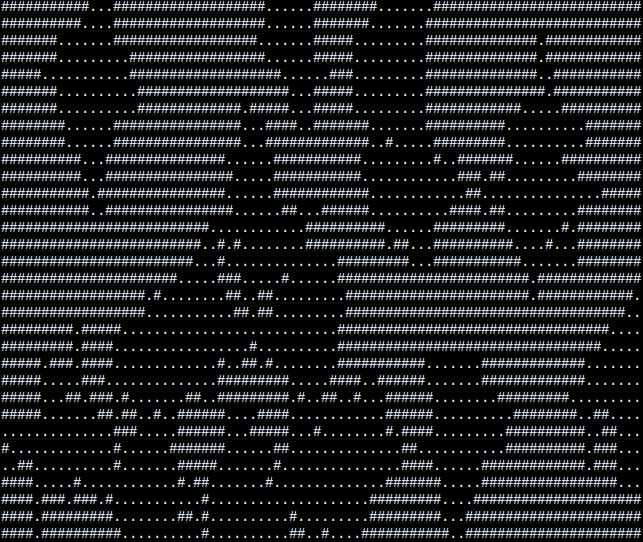A few days ago I was browsing my Gist collection when I came across a pair of old Python codes, Python 2 to be precise. I wrote these lines 7 years ago when I was recently introduced to Python by a coworker. So I thought “Why not review them?”, and here we are.
Before we start let me tell that both scripts are about game development, more precisely procedural terrain generation. Let’s take a look at them.
Spiral Flood Link para o cabeçalho
# Don't work =(
tiles = []
def spiralFlood(tiles, sx, sy, K, m):
x = y = 0
dx = 0
dy = -1
i = 0
while i < m and i < K*K:
if (-K/2 < x <= K/2) and (-K/2 < y <= K/2):
if 0 <= x + sx < 32 and 0 <= y + sy < 32:
# print (x + sx, y + sy)
tiles[x + sx][y + sy] = "#"
i += 1
if x == y or (x < 0 and x == -y) or (x > 0 and x == 1-y):
dx, dy = -dy, dx
x, y = x+dx, y+dy
return tiles
for i in range(32):
r = []
for j in range(32):
r.append(".")
tiles.append(r)
tiles = spiralFlood(tiles,15,15,32,15)
for k in range(32):
print tiles[i]
If I recall correctly, this was a test of an algorithm that creates masses of water, something like lakes, based on an initial point in a 2D grid. Let’s analyze the code:
- There is a typo in the first line, I know. And sure, the code doesn’t work as expected.
- It is poorly modular, has lots of meaningless single letter variables and magic numbers. These things are ok in an experimental code, but they turn the code hard to read and understand.
- The
spiralFloodfunction isn’t snake cased. If you already know Python well you should know about the Python Style Guide, the PEP 8. - The variable
tilesis shadowed inside the function. Shadowing also makes the code harder to read and understand.
Map Generation Link para o cabeçalho
# -*- coding: utf-8 -*-
# -- MAPGEN.PY --
import sys
import math
import random
class Map:
# consts
_FOUR_DIRECTIONS = [(1, 0), (-1, 0), (0, 1), (0, -1)]
def __init__(self, width, height):
self._width = width
self._height = height
self._data = [['#' for x in xrange(width)] for y in xrange(height)]
self._visited = []
for y in xrange(self._height):
for x in xrange(self._width):
self._visited.append((x, y))
def flood(self, x, y, cx, cy, max_distance):
self._data[y][x] = '.'
self._visited.remove((x, y))
for t in self._FOUR_DIRECTIONS:
nx, ny = x + t[0], y + t[1]
if self._visited.count((nx, ny)) == 0:
continue
distance = abs(nx - cx) + abs(ny - cy)
if distance > max_distance:
continue
probability = 1 - (distance / max_distance)
if random.random() <= probability:
self.flood(nx, ny, cx, cy, max_distance)
def spawnWater(self, seeds, max_distance):
for i in xrange(seeds):
k = random.randint(0, len(self._visited) - 1)
t = self._visited[k]
x, y = t[0], t[1]
self.flood(x, y, x, y, max_distance * 1.0)
def printMap(self):
for y in xrange(self._height):
for x in xrange(self._width):
sys.stdout.write(self._data[y][x])
sys.stdout.write('\n')
map = Map(80, 32)
map.spawnWater(16, 10)
map.printMap()
Looks better, right? The objective here is the same as the previous code. It generates a random output every time you run it, something like the following image.

Confusing, I know. Let’s abstract things here: # represents land and . water. Now, taking a close look in the code:
- It is more pythonic, with list comprehensions, tuples, and a class.
- Still not following the PEP 8. You can see I was using a mix of C# and C++ code style. Both languages were my background.
- Every method has a clear job and a good name. This is good.
After all, these scripts don’t look so bad as I imagined. Of course, if I was writing this code today I would change a couple of things like writing the code with Python 3 and using a better code styling. And that’s exactly what we get out of when we review old code: a chance to look back and see what we’ve learned and how we evolved as a developer. And that is all for today. See you next time.